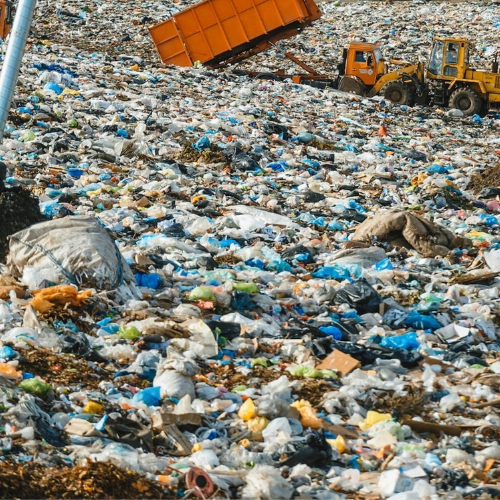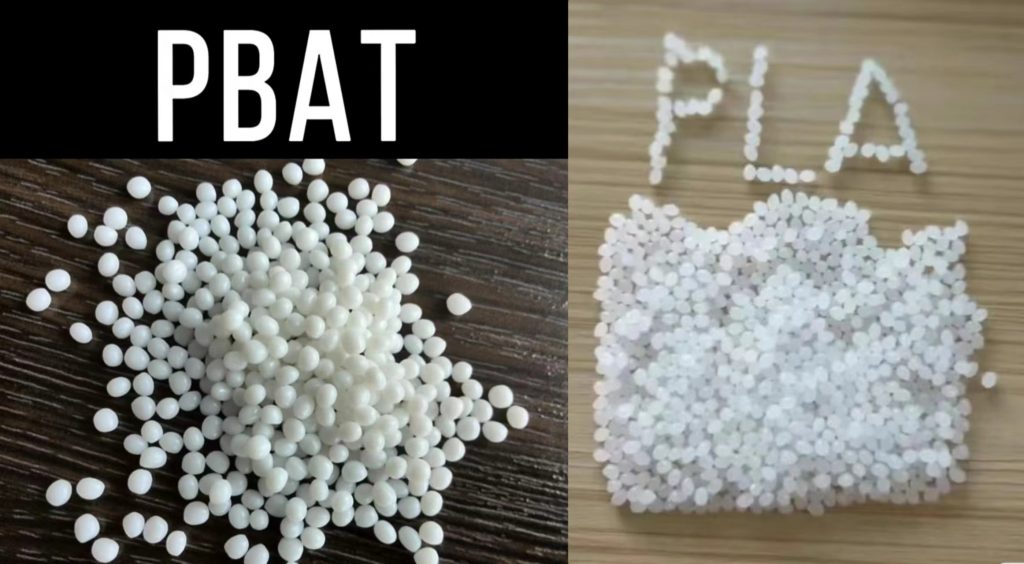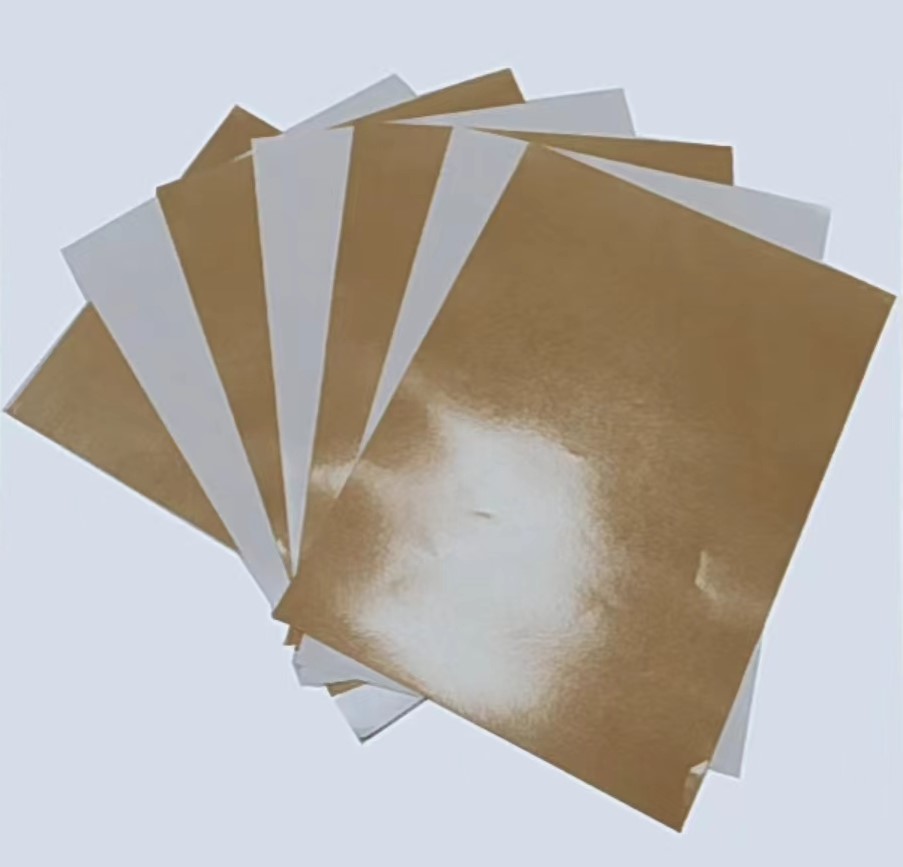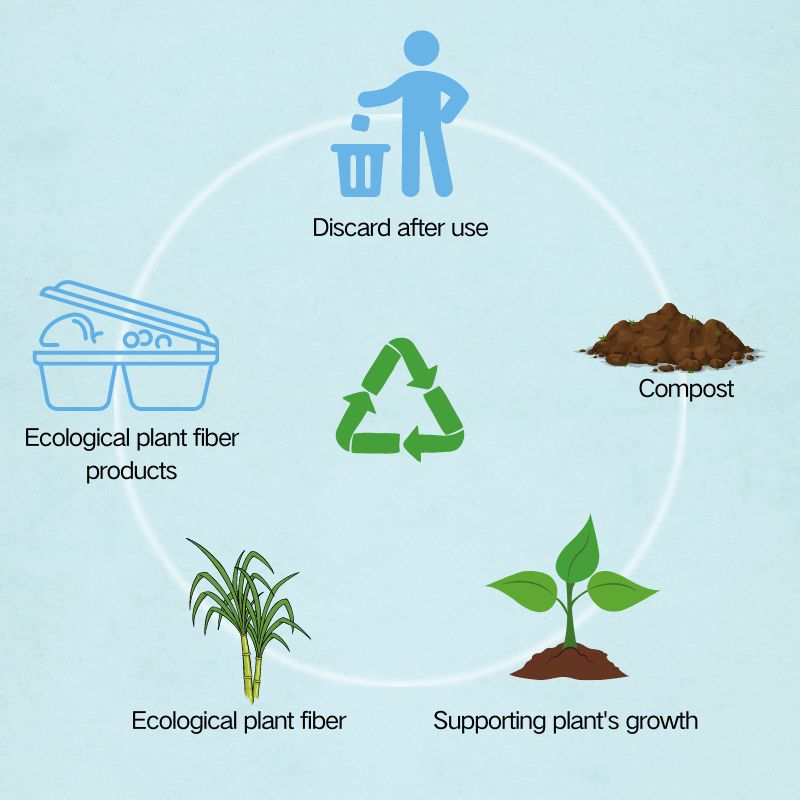1.Understanding Packaging Options
The starting point for making an informed decision is the understanding of the different types of packaging available. Given below are the main options, summarized in narrative and table form to be clear and easy to compare.
1.1 Traditional Non-Degradable Plastic Packaging

Pros: The mature supply chain has high cost-effectiveness
Cons: Being non-degradable, it will produce microplastics and cause serious pollution.
1.2 PLA/PBAT Degradable Plastic Products

Pros: Raw materials are biodegradable, similar performance to plastics.
Cons: higher requirements for degradation conditions; relatively higher cost of raw materials; short shelf life.
1.3 Polycoated paper products

Pros: Simple process, high automation, good barrier properties.
Cons: Single form, difficult to make three-dimensional products, low structural strength, requires lamination, non-degradable.
1.4 Pulp Molded Products

Pros: The raw materials are natural, using waste such as sugarcane bagasse, biodegradable, eco-friendly.
Cons: Opaque, less barrier properties to oxygen and steam.
1.5 Comparison Table
| Material Type | Advantages | Disadvantages |
| Traditional Non-Degradable Plastic | High cost-effectiveness, mature supply chain | Non-degradable, generates microplastics, severe pollution |
| PLA/PBAT Degradable Plastic Products | Biodegradable raw materials, similar performance to plastics | Strict degradation conditions, high raw material cost, short shelf life |
| Polycoated paper products | Simple process, high automation, good barrier properties | Single form, difficult to make three-dimensional products, low structural strength, requires lamination, non-degradable |
| Pulp Molded Products | The raw materials are taken from nature and make full use of sugarcane bagasse and other wastes. They are naturally degradable and environmentally friendly. The molding process is a purely physical process | Opaque, less barrier properties to oxygen and steam |
2.Comparative Analysis with PLA/PBAT
Knowing how the materials compare helps in judging the merit of the product well. The following analysis compares pulp-molded packaging with two other popular materials, i.e., PLA and PBAT, in their degradability, performance, application, and cost.
2.1 Degradability
| Property | Pulp Molded Packaging | PLA | PBAT |
| Natural Degradation | Yes | No | No |
| Industrial Composting | Not required | Required | Required |
| Temperature Range | Room temperature | ~60°C | 50-60°C |
| Humidity Requirement | No special requirements | 60% | 60% |
| Microbial Requirement | None | High | High |
| Degradation Time | Can be completely degraded in about 3 months | Shows signs of decomposition around 6 months | Shows signs of decomposition after about 3 months |
| Degradation Cost | Low | High | High |
Pulp molded products, made from natural plant fibers, can degrade naturally when buried in soil. In contrast, PLA requires much more specific conditions like high temperature, high humidity, and a significant number of microorganisms.They usually take at least six months to show signs of decomposition, even when buried. Both PLA and PBAT require composting under industrial conditions, the requirements for the former being slightly more significant than those for the latter to ensure degradation speed. In the degradability test, significant investments in setting up an industrial composting system and separate collection of degradable plastics resulted in high-cost inputs. Consequently, the pulp-molded products have more straightforward and cheaper degradation conditions than PLA and PBAT and are better in natural degradation.
2.2 Performance and Application
| Attribute | Pulp Molded Packaging | PLA | PBAT |
| Usable Temperature | -20 to 120°C | -20 to 50°C | -30 to 120°C |
| Formability | Good | Good | Good |
| Bending Strength | Good | Poor | Good |
| Hardness | High | High | Low |
| Barrier Properties | Low | High | High |
| Transparency | Low | High | Low |
| Transport Conditions | Regular temperature | Insulation | Regular temperature |
| Microwave Safe | Yes | No | Yes |
| Shelf Life | >36 months | ~6 months | ~6 months |
The pulp molded products have worse barrier properties and are not transparent relative to the biodegradable plastics of PLA/PBAT. However, they perform well in a wide temperature range and have good formability. In particular, PLA is degraded and deformed when the temperature exceeds 50°C, which calls for insulated transport and higher storage conditions. This limits its use in food service where microwave heating is required.So, pulp molded products are more suitable for cushioning packaging and tableware.
2.3 Cost Comparison
| Material | Pulp Molded Packaging | PLA | PBAT |
| Raw Material Cost | Lower | Higher | Higher |
| Product Price | Lower | Higher | Higher |
At present, the price of PLA is the highest, followed by PBAT, and the price of pulp molding raw materials is the lowest, so pulp molding products are more competitive in price
3.Factors to Consider While Choosing Eco-Friendly Packaging
For choosing an appropriate eco-friendly packaging material, the following factors need due consideration:
3.1 Environmental Impact
- Biodegradability: Choose materials that decompose naturally without harming the environment.
- Recyclability: Prefer materials that can be recycled to reduce waste.
3.2 Cost and Availability
- Cost-Effectiveness: Find if or not the used packaging material is economical.
- Raw Material Availability: Consider the availability of raw materials and supply chain logistics.
3.3 Product Compatibility
- Protection: Ensure the packaging material can adequately protect your product during shipping and storage.
- Shelf Life: Consider the product’s shelf life and how the packaging material affects it.
3.4 Consumer Perception
- Sustainability Appeal: Consumers increasingly prefer sustainable packaging. Choose materials that enhance your brand’s image as environmentally conscious.
- Marketing: Highlight your packaging’s eco-friendly benefits in marketing materials.
4.Advantages of Pulp Molded Packaging
Pulp molded packaging has become one of the most attractive forms of eco-friendly packaging for a range of reasons:
- Sustainability: It is made of plant fibers, which are renewable and abundant.
- Waste Utilization: It uses waste paper and agricultural residues, providing a solution for increasing waste management.
- Safety: Non-toxic and safe for food contact.
- Biodegradability: Totally biodegradable material; it degrades to become carbon dioxide and water, leaving no toxic residues in the environment.
- Recyclability: Easily recyclable and can be made into new pulp.
- Customizability: Can be molded into different shapes and sizes to fit specific requirements.
5.Conclusion
Therefore, determining appropriate eco-friendly packaging material should balance a company’s environmental benefits, cost, product compatibility, and consumer preference. Pulp molded packaging does offer such a sustainable solution, making it an excellent choice for businesses committed to reducing their environmental impact.
Come and find the pulp molded packaging that’s right for you!

